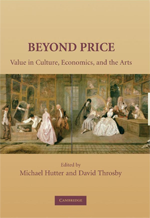Design / architecture
During the 1960s, a progressive liberation of the spectator from observer to active participant occurred in the visual and performing arts, which were reciprocally informed by participatory forms of social protest and performance: marches, sit-ins, riots, and so on. Dancer and choreographer Anna Halprin (née Ann Schuman, 1920–), with her San Francisco Dancers’ Workshop, was directly involved in these developments, and their experiments soon infiltrated the creative endeavors of her husband, landscape architect Lawrence Halprin (1916–2009).
Read More...Every decade or two, the professions of architecture and city planning are captivated by a movement with a particularly catchy name. Currently, the popular term is placemaking — a fairly loose term that is running neck and neck with “sustainability.” Within the design professions, this movement — really more a philosophy — suggests that people’s lives can be made better by intentionally designing interior and exterior spaces to embrace a wide range of users, provide for safety, and create artful expressions that endure over time.
Read More...Ever since Ponce de Leon sought the Fountain of Youth in 1513 near present-day Saint Augustine, newcomers have sought to inscribe their personal mythologies on Florida’s mutable landscape. Before Walt Disney turned central Florida wholly over to fantasy with the Magic Kingdom, South Florida had Miami, the Magic City, so named because it became a city almost overnight, without having been a town.
Read More...All things in nature have a shape, that is to say, a form, an outward semblance, that tells us what they are, that distinguishes them from ourselves and from each other.
Read More...January 2010, 21 pages. Fine Arts Fund, 20 East Central Parkway, Suite 200, Cincinnati, OH, 45202, 513-871-2787, www.fineartsfund.org
Supporters of the arts have struggled to develop a national conversation that makes the case for robust, ongoing public support for the arts; but public spending on the arts is too often criticized as an example of wasteful government spending or a misguided government intrusion into an area where it does not belong.
Read More...
Beyond Price: Value in Culture, Economics, and the Arts; Edited by Michael Hutter and David Throsby; Cambridge University Press, 2007, 324 pages
— Lewis Hyde
Recent studies on New York’s creative sector have established that the arts are a key asset in the city’s economic portfolio. Culture Counts: Strategies for a More Vibrant Cultural Life for New York City (2001); Creative New York (2005); and The Arts as an Industry: Their Economic Impact on New York City and New York State (2007) provide ample evidence that the diverse number of cultural institutions, arts-related businesses, and artists in New York generate employment, attract tourism, and enhance the city’s quality of life.
Read More...Before the house lights dim at a production of Romeo and Juliet, I look for myself and I am delighted to find myself as I was many years ago: A teenaged boy sitting by himself. I recognize him because he keeps checking the number on his ticket against the number on the armrest. All in all, he is pleased with his seat. He wears a sweater and tie. He reads his program with the intensity I used similarly to scrutinize the actors’ biographies, the director’s notes, and the advertisements for after-theater dining.
Read More...The current economic climate has forced many nonprofit arts organizations to confront underlying issues. Tensions mount, dollars are scarce, and unresolved weaknesses or fissures often grow. We have seen heartening examples of artists, donors, audiences, and funders rallying to support the art and organizations that they love. In some cases, streamlined, more focused organizations are forging ahead with renewed determination. But in other cases, the economic downturn may herald the time to close the doors.
Read More...
